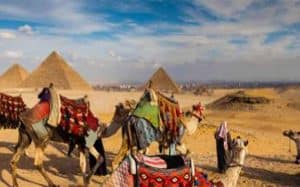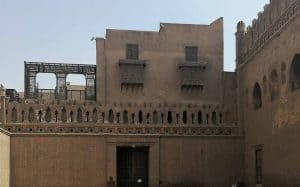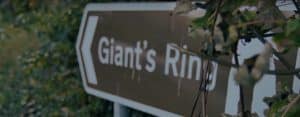The Eastern European Folk Dances: A Guide to Traditional Steps

Updated On: March 20, 2024 by Maha Yassin
Folk dances in Eastern Europe are vibrant expressions of cultural heritage passed down through the generations. These traditional dances are a window into the historical context and social functions of the communities from which they originated. They reflect not only the artistic diversity of these regions but also the shared experiences and values that bond communities together. Rich in movement and meaning, these dances continue to play an integral role in celebrations, rituals, and entertainment.
As we navigate Eastern European folk dances’ rhythmic steps and styles, we encounter a colourful tapestry of music, costumes, and performances. Each region presents its unique flair, with dance forms that range from the intricate and energetic to the harmonious and subdued. Dance training and preservation are crucial to maintaining the authenticity and vibrancy of these dances, ensuring their survival for future generations. At the same time, folk dances evolve, embracing modern influences while honouring their roots.
Historical Context of Eastern European Folk Dance
Folk dancing in Eastern Europe has transformed through time from simple peasant dances to a refined symbol of national identity. Each step and rhythm encapsulates a woven history of cultural influences and societal shifts.
From Peasant Dances to Court Dances
Initially, European folk dances were the simple expressions of the rural populace, vividly depicting their daily lives, work, and traditions. As these peasant dances grew in popularity, they caught the attention of aristocrats, who began adapting these vibrant expressions for the court. This blending saw the dances gain complexity and prestige, moving from open fields into the grand ballrooms of the elite.
Influence of the Church and Aristocrats
The Church and aristocracy played pivotal roles in shaping the folk dances we recognise today. The Church saw dance as a medium for moral instruction and festivity, effectively sanctioning certain forms and ensuring their perpetuation. In contrast, aristocrats moulded dances to suit their tastes, turning them into a spectacle of grace and mastery that reflected their status.
Renaissance and National Identity Formation
During the Renaissance, a resurgence in the arts and culture fostered a new environment wherein folk dance flourished. In this era, a burgeoning sense of national identity began to crystallise, and dances were often symbolic of this national spirit. As European countries sought to define their cultures, folk dances were crafted and codified to embody each nation’s unique history and ethos.
Types of Folk Dances in Eastern Europe
Eastern Europe offers a rich tapestry of folk dances, each with distinct characteristics and historical significance. From communal circle and line dances to the intricate steps of couple and solo performances, we explore the vibrancy and diversity of these traditional movements.
Circle Dances and Line Dances
Circle dances such as the Hora are quintessential to many Eastern European cultures. Typically danced at weddings and festivals, participants join hands and follow a choreographed sequence of steps in a circular motion. Similarly, line dances are performed with dancers in rows, following synchronised patterns that often reflect historical storytelling or are linked to agricultural activities.
Couple Dances and Solo Dances
The fast-paced Polka is widely recognised among couple dances, with its lively tempo and hopping steps. Another famed couple dance is the Czárdás, a traditional Hungarian dance characterised by variation in pace, starting slow and building to a spirited climax. Solo dances in Eastern Europe, such as the Polish Krakowiak, involve a soloist or group presenting high energy, acrobatic moves, often to the accompaniment of a live folk band.
Ritual Dances and Festival Dances
Ritual dances are sacred in Eastern Europe, often performed to mark significant milestones like harvest or rites of passage. These dances, like the Morris Dance, though more associated with Western Europe, have counterparts in the East which similarly integrate choreographed steps with elements of dramatisation and symbolism. Festival dances are central to community celebrations, where the entire village may come together to partake in age-old traditions, preserving their cultural heritage through each step and tune.
Music and Rhythms in Folk Dance
The interplay of music and rhythm forms the essence of folk dance, with each component integral to the cultural expression and storytelling traditionally found within Eastern European communities.
Traditional Music and Instruments
Traditional music offers a rich tapestry of sound in Eastern European folk dance, owing much to the variety of musical instruments specific to the region. Instruments such as the Hungarian fiddle, the Ukrainian bandura, and the Russian balalaika set the foundational tones for the dances. Each country boasts a unique ensemble, creating a sonorous backdrop that both drives and complements the movements of the dancers.
For example, parallel traditions in Eastern European folk dance showcase how these instruments contribute to portraying customs and rituals in performances. This music is not merely for ambience; it’s a language speaking directly to these communities’ lineage and living traditions.
Rhythm Patterns and Dance Figures
Folk dances are defined by characteristic rhythm patterns and dance figures, with the pattern often denoting the type of dance, such as the vibrant polka. Eastern European folk dances frequently utilise a range of counts, often in compound meters like 7/8, which guide the steps and give each dance its unique personality.
Each dance figure is a sequence of movements that often repeat in particular rhythms, conveying stories or mimicking daily activities. These figures can also be influenced by other forms of dance, such as ballet, seen in the polished and precise movements within certain folk dance choreographies.
The syncopated beats and dynamic tempos call to movement, compelling the dancers to execute figures ranging from the stately to the exuberant. Acknowledging the choreographic elements present in a treasury of international folk dances, it is evident that the embodiment of music through dance is a cultivated art form. These patterns are not spontaneous; they result from generations of refinement and passionate preservation.
Traditional Costumes and Design

In this section, we explore the enduring legacy of Eastern European folk costumes, revealing their significance and the intricate details that make them unique.
Costume Significance and Variations
In Eastern Europe, traditional costumes are more than mere clothing; they are emblems of ethnic identity and cultural pride. Each nation exhibits distinctive designs deeply interwoven with its history and societal norms. For instance, in the Baltic countries, such as Estonia, Latvia, and Lithuania, folk dress is an expression of national identity and a revered element at ethnic celebrations where they sing folk songs and showcase their cultural heritage. Similarly, women’s folk costumes can indicate social status with different headgear signifying marital status–unmarried women often wear crowns or floral wreaths. In contrast, married women typically cover their hair with caps or cloths.
Embroidery and Accessories
Embroidery is a defining characteristic of Eastern European traditional costumes, showcasing a variety of colours and patterns that reflect local traditions. The intricate designs often bear symbolic meanings, such as protection and prosperity. Accessories, including shawls with decorative borders and beaded vests, are also essential. They complement the overall aesthetic of the costume and involve craftsmanship passed down through generations.
Our analysis noted how traditional dress and embellishments serve as a canvas, telling stories of the people’s roots and societal values. By examining the costumes closely, we gain insights into the rich tapestry of Eastern European cultural life.
Folk Dance Performances and Entertainment
In Eastern Europe, folk dance is a dynamic expression of cultural identity and tradition. We observe a vivid spectrum of performance styles, from professional ensembles to village groups, each offering an authentic glimpse into the heart of these communities.
Professional Ensembles and Village Groups
Professional folk dance ensembles represent the pinnacle of formal performance. These groups masterfully blend traditional steps with refined, often theatrical elements, making every performance a spectacle of culture and heritage. In contrast, village groups remain the custodians of tradition, delivering performances that are as much a part of social entertainment as they display communal bonds.
Professional Ensembles
- State Folk Dance Ensembles reflect a commitment to authenticity and excellence, varying in their portrayal of traditional dance.
- Performances are held locally and internationally, spreading the influence of Eastern European dance.
Village Groups
- Foster the practice of heritage within the community.
- Performances are a regular feature at local festivals and celebrations.
Theatrical Presentations and Choreographies
When it comes to the theatrical presentation of folk dance, choreographies are executed with a flair for entertainment that’s as engaging as it is evocative. These presentations, often held on grand stages, combine traditional steps with choreographed sequences to tell a story or evoke the spirit of a particular celebration.
- Professional Folk Dance Ensembles in Eastern Europe are known for adapting folk dances for the stage, balancing traditional authenticity with entertainment spectacle.
- Both professional and village performances tend to be integral aspects of community entertainment, showcasing the enduring allure of Eastern European dance traditions.
Social Functions of Folk Dancing
Dance possesses the unique power to bring people together, enlivening social bonds and celebrating community ties. It’s integral to numerous communal celebrations, often encapsulating the local history and sentiments.
Weddings and Community Gatherings
At weddings, folk dances visually represent cultural identity and unity. The intricate steps and music reflect the community’s heritage, providing a tangible connection to ancestry and tradition. It’s common for entire villages to partake, with dances often serving as a rite of passage for the newlywed couple. The dances at weddings are not merely for display but are participatory, inviting guests to convey their good wishes through collective movement.
In community gatherings, folk dances act as the heartbeat of social interaction. These occasions enable individuals to forge and renew bonds, enhancing the community fabric. The collective nature of the dances, performed in circles or pairs, encourages camaraderie and a sense of belonging.
Folk Dancing in Festivals and Celebrations
During festivals, folk dancing transforms into an exuberant display that often tells a story or marks the change of seasons. Each festival may have specific dances loaded with symbolism, embodying the spirit of the celebration. The energetic whirl of dancers in colourful attire is a feast for the eyes and a statement of communal pride and joy.
These dances, performed at festivals and celebrations, are more than just entertainment; they are a living archive of a community’s way of life and folklore. They provide a space for individuals of all ages to engage with their heritage; through this involvement, folk traditions are kept alive and passed down through generations.
Regional Variations and Styles

Eastern Europe’s folk dances reveal a tapestry of tradition and cultural identity. Each dance captures the essence of its native country through distinctive steps, music, and costumes.
Diversity in Eastern European Dances
The folk dances of Eastern Europe are as varied as the landscape itself, showcasing a rich tapestry of cultural history. From the lively Wedding Dances of Romania to the intricate footwork in Bulgarian Horo, diversity is the cornerstone of the region’s dance heritage. These traditional dances provide a glimpse into past generations’ daily lives but continue to evolve, remaining a vibrant part of Eastern European life.
Croatian, Hungarian, and Polish Folk Dances
Croatia is home to a wealth of folk dances, with each region offering its unique style. The Kolo, for example, is a common dance form that highlights community and unity, with dancers moving in a circle, often to the rhythms of traditional string instruments.
Hungarian folk dances, like the Csárdás, demonstrate a vibrant energy with their fast tempo and dramatic changes. Men’s dances, in particular, are known for their dynamic and acrobatic movements, while women’s dances tend to interpret the music through graceful steps and swirls elegantly.
Moving towards Poland, the Mazurka and Polonaise are testament to the nation’s historical and cultural influence. These dances, often performed at celebrations and national events, are renowned for their noble character and stylised promenades that have captured the imagination of audiences and dancers worldwide.
Dance Training and Preservation

In Eastern Europe, folk dance is an intrinsic part of cultural expression, and its preservation is taken seriously. Through rigorous training and academic study, the essence of these traditional dances is kept alive for future generations.
Folk Dance Schools and Workshops
We recognise the importance of folk dance schools and workshops as the beating heart of cultural preservation. In these centres, pupils of all ages learn intricate dance steps passed down over centuries. Instructors, often bearing a traditional lineage, impart training beyond mere steps—weave history and cultural context into every lesson. For example, in France, the preservation of folk dances is supported by various cultural institutions and workshops that strive to keep the traditions alive through regular practice and performance.
Documentation and Folklore Studies
Documentation and scholarly work are crucial to the conservation of folk dance. Scholars in ethnochoreology, a discipline dedicated to studying dance in its socio-cultural context, have ensured that every nuance, from hand gestures to footwork, is analysed and recorded. Many of these experts publish their findings, contributing to a rich tapestry of literature that serves as a record and a resource for enthusiasts and practitioners worldwide. This academic pursuit helps safeguard the diversity of folk traditions in Eastern Europe, preventing their dissolution into the annals of history.
Folk Dance in Modern Times

We are witnessing a profound transformation in folk dance as it navigates the waters of popular entertainment and grapples with the balance between authentic traditions and choreographed adaptations.
Revival and Popular Entertainment
Folk dance continues to thrive as a beloved and intriguing popular entertainment genre in modern times. Across Eastern Europe, there is a renewed interest in folkloric traditions as societies rediscover their cultural identities. Festivals and performances showcase a blend of time-honoured steps with contemporary influences, drawing both locals and tourists. Ensembles such as state folk dance companies often catalyse this revival, propelling folk dance onto stages worldwide and infusing it into mainstream culture.
Authentic vs Choreographed Folk Dance
The discourse on authenticity in folk dance is ever-present. While some purists argue for preserving the original form, others embrace the evolution with choreographed shows that adapt traditional movements for modern audiences. As an expression of cultural history, authentic folk dance embodies the customs, music, and costumes handed down through generations. On the other hand, choreographed performances might prioritise aesthetics and entertainment value, often leading to debates on the true essence of folk dance in the current era.
Criticism and Evolution of Folk Dance

In exploring the realm of folk dance, it’s crucial to consider the roles played by those who critique and shape it and the nature of its ongoing transformation.
The Role of Critics and Dance Masters
Critics and dance masters have long been influential in folk dance, meticulously analysing performances and providing indispensable critiques. Their work method often involves dissecting dance steps, ensuring authenticity, and maintaining the integrity of traditional movements. The Hungarian State Folk Ensemble exemplifies professionalism in this genre, having solidified its reputation for excellence. These experts, equipped with dance manuals and a deep understanding of cultural nuance, have helped popularise representations of Eastern European dance on global stages.
Adaptation and Innovation in Folk Dance
Folk dance is not static; it has adapted over time, evolving while harking back to its traditional roots. Through innovation, dance masters introduce novel interpretations without forsaking the essence of the original forms. For instance, Croatian folk dancing in the United States has seen a melding of traditional and contemporary approaches, creating a vibrant dance culture that respects its European origins. This adaptation facilitates the survival and relevance of folk dance in modern times, captivating new audiences and preserving the legacy of Eastern European heritage for future generations.
FAQs

In folk dances, Eastern Europe offers an incredibly diverse tapestry of steps and traditions, each with its historical significance and unique patterns. We explore some of the most enigmatic dances that define this region’s cultural heritage.
What are some of the quintessential folk dances indigenous to Eastern Europe?
Eastern Europe is home to a rich variety of folk dances, with each country featuring its own distinctive forms. For instance, the Polish Polonaise, the Hungarian Csárdás, and the Ukrainian Hopak are considered emblematic of their respective cultures.
Can you list the most popular traditional dances found across Europe?
Certainly, Europe boasts a wide range of popular traditional dances. Among them are the Irish Jig, the Scottish Highland dances, the Spanish Flamenco, and the Italian Tarantella, all of which are integral to the cultural fabric of their regions.
What historical development has shaped European folk dance traditions?
Various historical events, including the migration of peoples, royal influences, and the preservation of regional identities, have shaped European folk dance traditions. Ancient agrarian cycles paired with the evolution of social and court dances in Europe’s cities have greatly contributed to the complex tapestry of European folk dance.
What are the characteristic steps and movements in Eastern European folk dances?
The steps and movements in Eastern European folk dances generally include walking, hopping, skipping, and turning variations. These steps range from simple to intricate, with patterns designed to be lively and expressive, often performed in groups or pairs.
How are traditional Polish dances categorised, and could you name five principal types?
Polish dances are typically categorised by region and style, each with its distinctive rhythm and choreography. Five principal types include the Mazur, Kujawiak, Oberek, Krakowiak, and the Polonaise, which reflect the nation’s diverse cultural landscape.
In what ways do European folk dances differ in style and execution from other global dance traditions?
European folk dances often differ from other global dance traditions in their use of specific formations, such as circles, lines, and couples, as well as their music, costumes, and the occasions they commemorate. While some dances emphasise precision and grace, others focus on the vibrant energy and communal spirit unique to the European continent.






